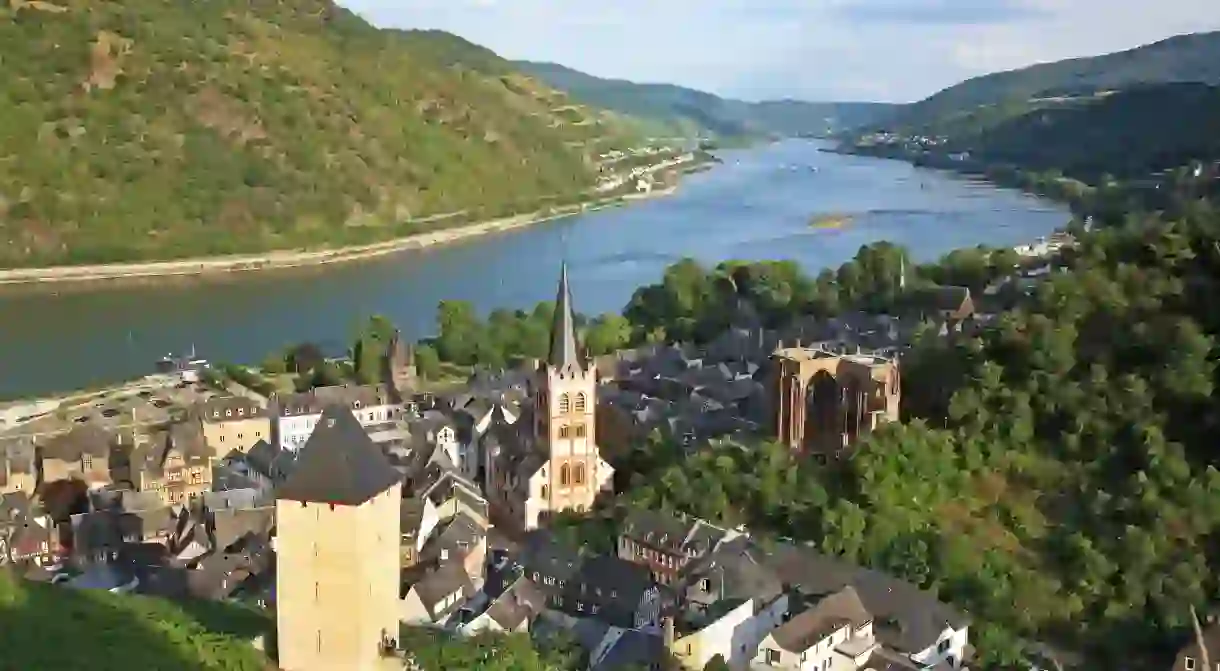12 Wonderful Ways To Connect With Nature in Germany

Wide expanses of rolling emerald hills, world-class riverscapes and biodiverse discoveries await on an exploration of Germany’s natural wonders – from the beautiful to the inspirational.
Whether you want to explore vast caves dating back to the Ice Age in the Swabian Jura or discover ancient fossils at Messel Pit, UNESCO’s World Heritage sites of natural and cultural significance are perfect for those seeking a tranquil trip to Germany. Here are 12 you might want to visit.
Erzgebirge/Krušnohoří Mining Region
Natural Feature

A deep, jagged landscape shaped by 800 years of Saxon-Bohemian mining marks the distinctive Ore Mountains that straddle southeastern Germany and the northwestern Czech Republic. An important source of silver, tin and uranium over the years, the region speaks to the great European and worldwide influence of Saxon-Bohemian mining from the Renaissance to modern times.
Caves and Ice Age Art in the Swabian Jura
Natural Feature

Travel into the Swabian Jura and explore the fascinating cavernous dwellings of some of the first modern humans. The caves are lined with some of the oldest evidence of figurative art and are the source of the world’s oldest musical instruments found to this day.
Messel Pit Fossil Site
Natural Feature

Uncover signs of early mammal evolution at Germany’s first World Natural Heritage Site (1995), the Messel Pit. It’s the richest site for understanding the Eocene era (57 million to 36 million years ago) – and the state of conservation, quantity and diversity of the fossils found there is incredibly unique.
Muskauer Park / Park Mużakowski
Park

Blending seamlessly with the surrounding landscape, Muskauer Park sits astride the Neisse River and the Polish-German border, sharing common cultural heritage with both countries. Prince Hermann von Pückler-Muskau built the park from 1815 to 1844, creating a new landscape-design concept and adding much to the field of landscape architecture.
Primeval Beech Forests of the Carpathians and the Ancient Beech Forests of Germany
Natural Feature, Park

Spanning 12 countries across the European continent, these vast beech forests display the most complete ecological patterns and processes of pure European beech stocks in a variety of environmental conditions. Consider it the perfect opportunity to walk among giants.
Upper Middle Rhine Valley
Natural Feature

The Upper Middle Rhine Valley was the first natural feature to be bestowed the UNESCO title in Germany. Dotted with castles, historic towns and vineyards that overlook one of the world’s greatest rivers, this 65-kilometre stretch of the Rhine Valley boasts an exceptional, organically developed cultural landscape, shaped by its status as one of the most important transport routes in Europe for two millennia.
The Wadden Sea
Natural Feature

The Wadden Sea is unlike any other system of mud flats and intertidal sand in the world, and it is of special importance for global biodiversity. Its formation gave rise to an abundance of transitional habitats from sea-grass meadows and mussel beds to salt marshes and dunes. The area’s diverse seascape also attracts harbour seals, grey seals and harbour porpoises.
Bergpark Wilhelmshöhe
Park

At 2.4 square kilometres, Bergpark Wilhelmshöhe is the continent’s largest hillside park, with beautiful water displays descending a long hill topped by a monument dedicated to Greek demigod Hercules. This unique garden of Baroque and Romantic art combines a series of dramatic waterfalls and wild rapids. Seek out the geyser-like Grand Fountain for a 50-metre spectacle.
Garden Kingdom of Dessau-Wörlitz
Park

Cross ornate bridges over picturesque streams, spot glorious buildings and statues, and explore beautiful English-style gardens at the Garden Kingdom, located in Saxony-Anhalt in Germany’s Middle Elbe Region. It’s an outstanding example of landscape design at the time of the Enlightenment.
Monastic Island of Reichenau
Monastery

Located close to the Swiss border in southern Germany, the island of Reichenau on Lake Constance houses the great Benedictine monastery of the Middle Ages – an important artistic centre during that period. Its significance in European art history is superbly illustrated by its monumental wall paintings and illuminations.
Prehistoric pile dwellings around the Alps
Archaeological site

More than a hundred individual stilt houses dating from between 5000 BC and 500 BC punctuate the edges of lakes, rivers and wetlands that surround the magnificent Alps. This group of unusually well-preserved archaeological sites is one of the most important sources for research into the world of early European agricultural societies.
Archaeological Border complex of Hedeby and the Danevirke
Archaeological site

Dating back over a thousand years, the archaeological site of Hedeby comprises the remains of an emporium and is enclosed by a line of fortification – an exceptional testimony to the trade and exchange relations between the North Sea and the Baltic Sea as well as Northern and Central Europe during the Viking Age.
Ready to discover natural heritage landmarks and masterpieces of human creativity? Visit worldheritagegermany.com for routes that showcase Germany’s 46 UNESCO World Heritage sites. Starting and finishing near an international airport, the trails will introduce you to natural wonders, innovation, industrial heritage and more.

Germany is home to an array of UNESCO World Heritage sites
This branded content article was published as part of a commercial campaign that has now ended.













